The Traditional Rules of Composition |
Part One of a Two-Part Essay
Composition is one of the most important aspects of photography. What follows are what I consider to be the traditional rules of composition. These are the rules I recommend you study and learn to master first. When that is done, I recommend you start "breaking the rules" to create your own composition rules.
Many of us find rules limiting and want to "break the rules." However, it is important that you learn the traditional rules first. Breaking the rules right away, without learning them first, rarely leads to successful images. Instead, it leads to doing "whatever." In other words, it leads to images that may be strange, weird, or "different" but not to images that are well constructed and worth spending time studying and admiring. These images may attract our attention at first glance, they may even surprise us, but upon closer inspection they turn out to not warrant extended interest.
In this essay we are going to look at 18 different rules of composition. For each rule we will first look at a description of the rule and second at photographs composed with this rule. For most rules both a vertical and an horizontal example are provided. Lines are drawn on some of the photographs to show how each of them was constructed.
Finally, we will look at a number of exercises designed to strengthen your composition skills.
1) The Rule of Thirds
To use this rule, simply divide your image in three equal parts and compose your image in thirds. This applies to both vertical and horizontal compositions.
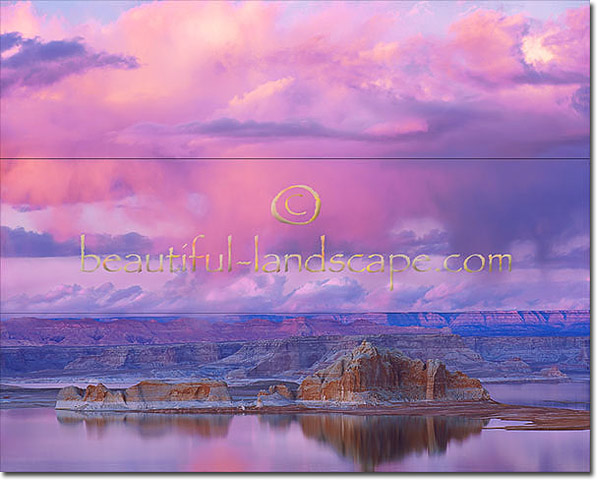
The Rule of Thirds Example
2) The Golden Rule
The Golden Rule states that the most important area of an image is located near the bottom right corner of the image, roughly one fourth of the image height up and one forth of the image width to the left.
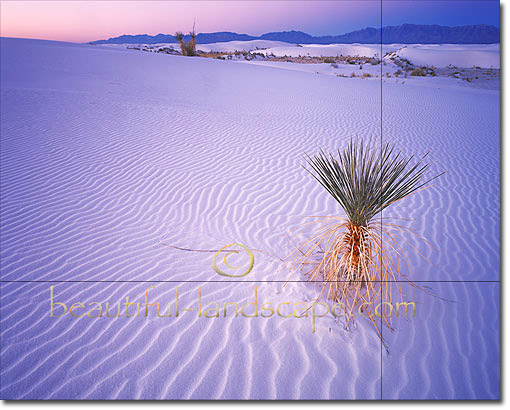
The Golden Rule Example
3) Leading Lines
To use this composition, look for lines leading the eye into the composition. A typical example is a road, or a pair of railroad tracks, going away from the viewer and towards the horizon. Look around you for leading lines that you can use to create a composition. In the landscape this can be a road, a wall, a fence, a stairway, a path, a river, a natural pattern, etc.
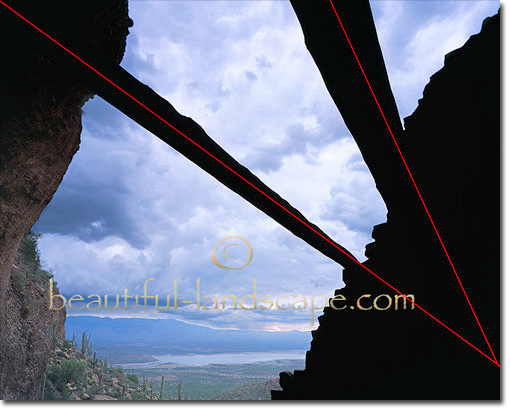
Leadng Lines Example
4) Framing
In this composition the background is framed by a foreground element. In the two examples below a natural arch is used to frame the landscape behind it. This type of composition makes viewers feel that they are looking onto the landscape through a window. It also allows you to not use any sky at the top of the image by using a foreground element all around the image.
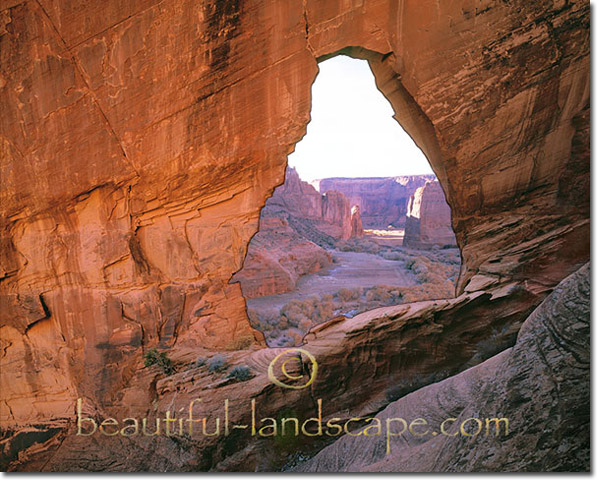
Framing Example
5) Thin Sky
In this type of composition the sky is kept to a minimum. This type of composition works great when there are no clouds in the sky. It is also very effective when you want to indicate where the horizon line is without emphasizing the sky.
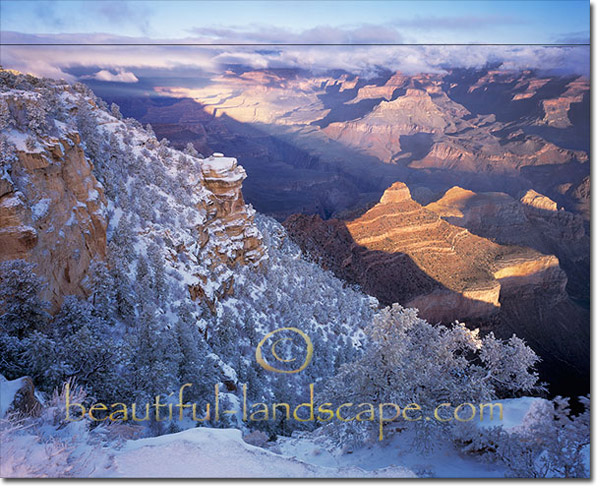
Thin Sky Example
6) Thin Horizon
This composition is similar in approach to the Thin Sky composition, except that this time it is the amount of land that is minimized. This composition works well when you want to show only a minimal amount of land, either because the land is not that interesting or because you want to use the land only to indicate where the horizon is.
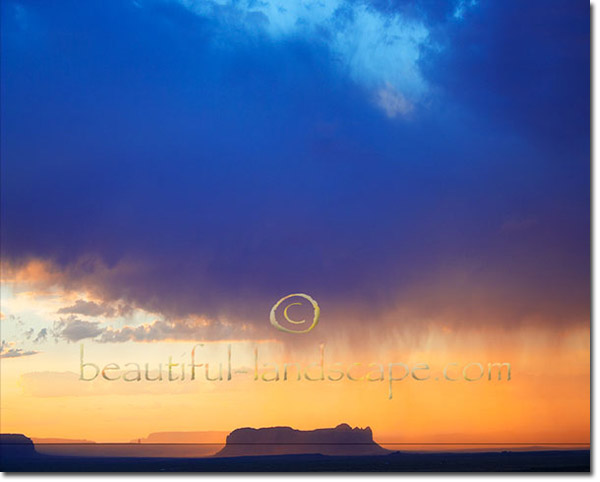
Thin Horizon Example
7) S-Curves
An SĖCurve is a very dynamic element. In fact, it may be the most dynamic of all the lines and curves at your disposal. If you want to create dynamic images, always look for S-Curves and always photograph them! You just cannot go wrong. Plus, S-Curves are not only strong graphic elements, they also give rhythm and movement to your images.
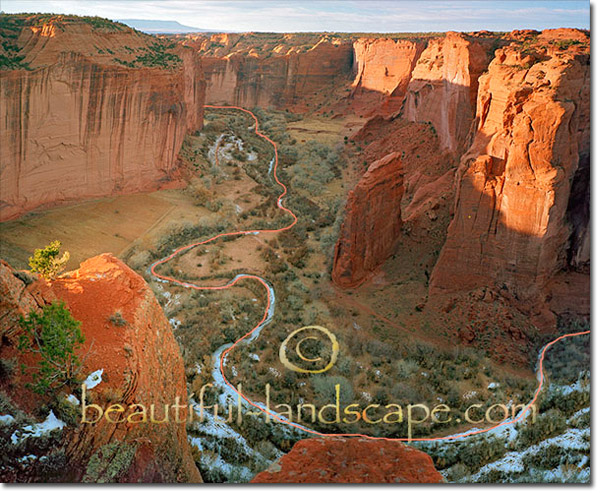
S-Curves Example
8) Diagonal LInes
Diagonal lines are one of the simplest and most useful types of composition. All you need to do is find an element that creates a diagonal line across the image, from top to bottom.
Diagonal lines are dynamic and can be used to create dramatic compositions. They divide the space evenly, giving a sense of balance to the image. You can also be creative in regards to what you use to create a diagonal line by using elements such as trees and hills, as in the examples below, or rocks, mountains, rivers, trees lying on the ground and more. As with many types of compositions, you are only limited by your imagination.
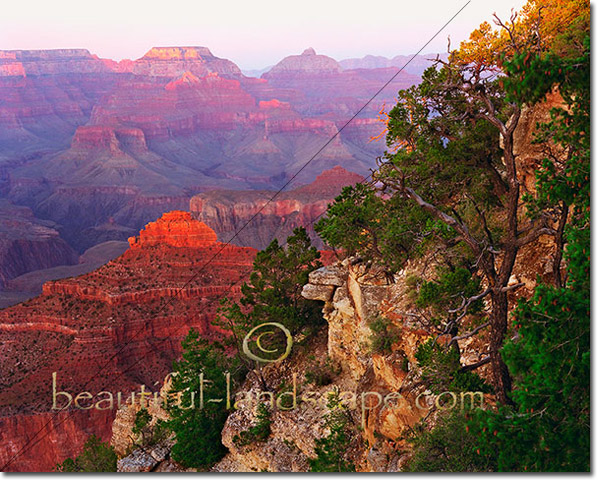
Diagonal Lines Example
Vertical LInes
Photographs composed according to this rule consist almost exclusively of vertical lines.
Vertical line compositions are often very simple because they are most effective when only vertical lines are used. However, as with all other types of compositions, several rules can be combined to create a more dynamic image.
A medium or long telephoto lens helps with this type of composition because it allows you to narrow down the field of view. While it is possible to find a wide area filled with vertical lines, such as in a forest, it is often necessary to eliminate unwanted elements by narrowing the field of view.
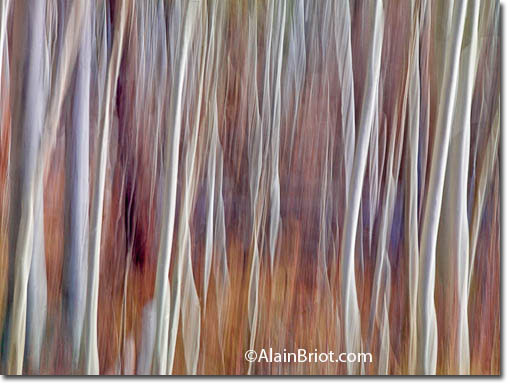
Vertical Lines Example
10) Horizontal Lines
Photographs composed according to this rule consist almost exclusively of horizontal lines.
Horizontal line compositions are most effective when only horizontal elements are used. This means that this type of composition can be kept very simple. However, as with all other types of compositions, several rules can be combined to create a more dynamic image.
A medium or long telephoto lens helps with this type of composition because it allows you to narrow down the field of view. While it is possible to find a wide area filled with horizontal lines, such as in a landscape with horizontal rock formations stacked above each other, it is often necessary to eliminate unwanted elements by narrowing the field of view.
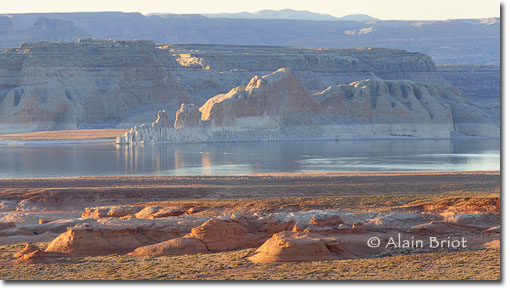
Horizontal Lines Example
11) Foreground-Background
Foreground-background compositions make use of a prominent element in the foreground combined with an exciting middle ground and background.
In the images below the red line circles the foreground element, the yellow line the middle ground and the green line the background element.
The foreground is the key to success with this type of composition. Spend time looking for a visually exciting foreground element. One you find a great foreground element, make sure you position yourself close enough to this element so that you fill the frame with it, as much as possible. A wide angle is best for this composition, although if you can back up far enough you can also use a normal lens or a short telephoto.
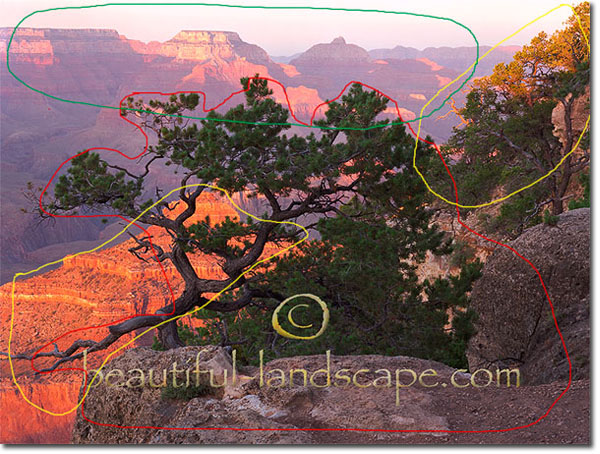
Foreground-Background Example
12) Centered Compositions
Centering the composition is done by giving equal amounts of space to the land and to the sky. Basically, the image is split in half, with one half occupied by the sky and the other half by the land.
Centering gives a sense of balance to the image. Centered images are less dynamic than off-centered photographs. Centered images are more "quiet" than images in which elements are given uneven amounts of space.
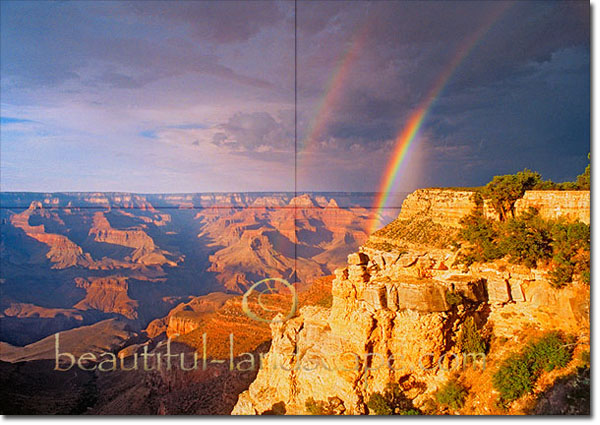
Centered Composition Example
Comments on NPN landscape photography articles? Send them to the editor. NPN members may also log in and leave their comments below.
 Alain Briot creates fine art photographs, teaches workshops and offers DVD tutorials on composition, raw conversion, optimization, printing, marketing photographs and more. Alain is also the author of Mastering Landscape Photography and Mastering Photographic Composition, Creativity and Personal Style. Both books are available from Amazon and other bookstores as well from Alainís website.
Alain Briot creates fine art photographs, teaches workshops and offers DVD tutorials on composition, raw conversion, optimization, printing, marketing photographs and more. Alain is also the author of Mastering Landscape Photography and Mastering Photographic Composition, Creativity and Personal Style. Both books are available from Amazon and other bookstores as well from Alainís website.
You can find more information about Alain's work, writings and tutorials as well as subscribe to Alainís Free Monthly Newsletter on his website at http://www.beautiful-landscape.com. You will receive over 40 essays in PDF format, including chapters from Alainís books, when you subscribe.